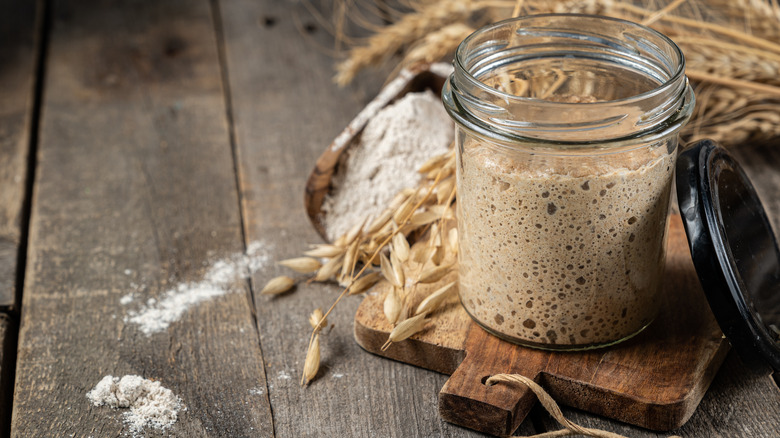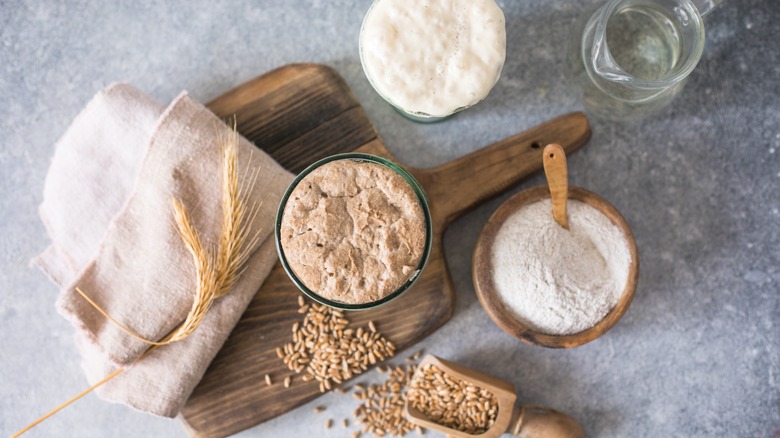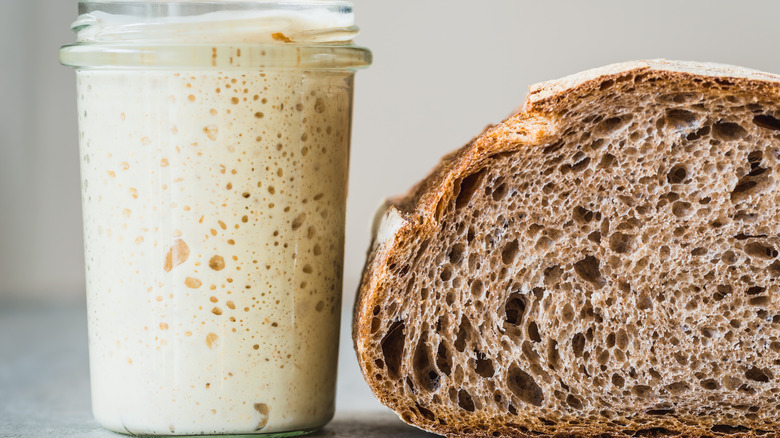The Reason Your Sourdough Starter Might Be Failing
Few delicacies rival the pleasure of a good slice of sourdough bread. This simple yet complex canvas holds limitless possibilities, offering a subtle tangy flavor that perfectly compliments sweet and savory accouterments alike. By investing the time and effort required to learn how to create your own bread starter and honing your sourdough skills, you not only ensure perpetual access to great bread — you also open the door to the delicious dishes you can make with sourdough discard.
But while mixing up or purchasing a sourdough starter is easy enough, actually keeping it alive can be a real challenge. Not only do you have to remember to feed it consistently, but you also have to maintain the necessary environmental conditions that allow it to thrive — including the temperature in which it lives, a variable that's far too often overlooked. Since the temperatures in our homes are subject to fluctuation throughout the day and over the year, this vital component can be difficult to control, but it's not impossible. Your poor starter needs to be not too cold — but also not too warm, either.
Temperature is the missing ingredient in starter maintainence
If you have experience maintaining a sourdough starter, you're already familiar with the initial song and dance. Combine flour and water, then cover and rest for 24 hours at room temperature. Then discard half, add more water and flour, and cover and rest for another 24 hours. Then feed twice a day until it's ready to use.
While most recipes detail exactly how much starter you need to discard each day, how much flour and water to add back in, and the frequency of feedings, the temperature of your starter's environment is often only mentioned in passing. This doesn't make it any less crucial though. And failing to understand this can cause both headaches and heartbreak for aspiring homebreadmakers.
What we often forget when setting out on our sourdough journey is that, although making bread is our goal, fermentation is the initial process we're agreeing to — and establishing a healthy sourdough microbiome requires temperature consistency. Want to ferment something faster? Increase the temperature. Want to slow the process down? Drop the temperature lower. But whatever temperature you choose — somewhere around 78 degrees Fahrenheit is ideal — if you want your starter to develop according to the timeline outlined in your recipe, you've got to keep it consistent. Once you've fully established the starter, you can store it in the fridge for easier maintenance, but keep your starter's environment consistently warm early on to ensure proper fermentation.
How to maintain the right temperature for your starter
As a rule of thumb, sourdough starters should stay above 65 degrees and below 90 degrees Fahrenheit. How do we avoid the harmful effects of inadvertently inconsistent temperatures? Whether you're willing to spend money or not, there are helpful steps you can take to keep your starter as consistently cozy as possible.
The most economical and easily accomplished option: Find a place to keep your starter that's away from windows and strong heat sources, like your stove top or radiator. While the intention to keep your starter warm may make these tempting options, direct sunlight and changing temperatures throughout the day make them undesirable options. Being too close to direct heat — like a burner on your stovetop — could overheat and even kill your starter's yeast. Instead, choose a warm cupboard or corner that will keep it from direct light and moisture, which have the potential to negatively impact it.
If you live in a climate or home that makes it difficult to maintain a consistent, cozy temperature, you'll want to employ the necessary tools to do so. Several temperature control devices on the market have been designed to keep sourdough starters at the perfect temperature year-round, typically ranging from $99 to $199. For a less expensive option, investing in a yogurt maker is a great way to keep your starter happy through even your most extreme temperature months.



